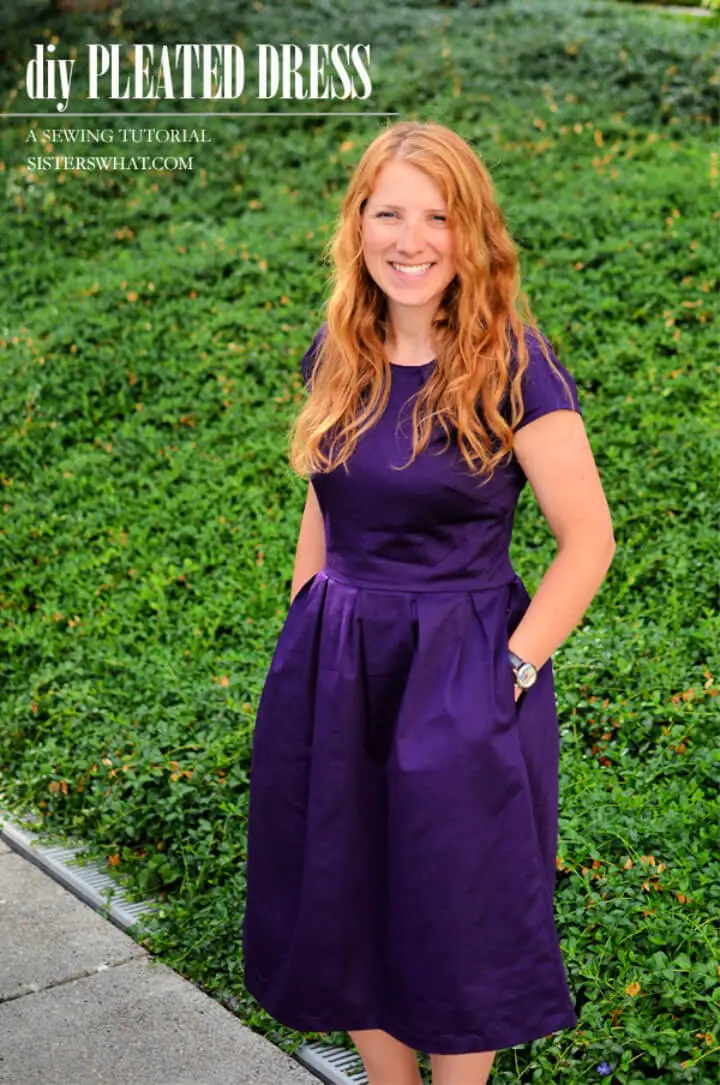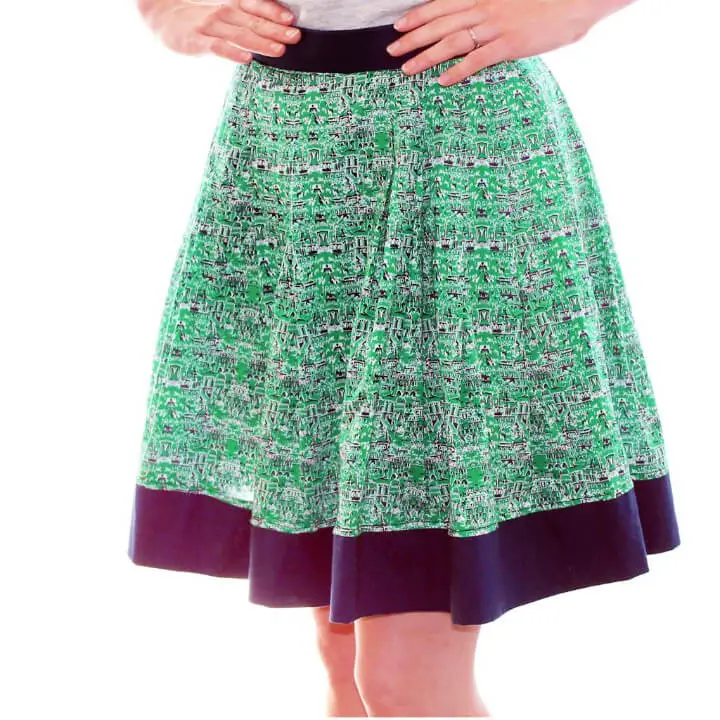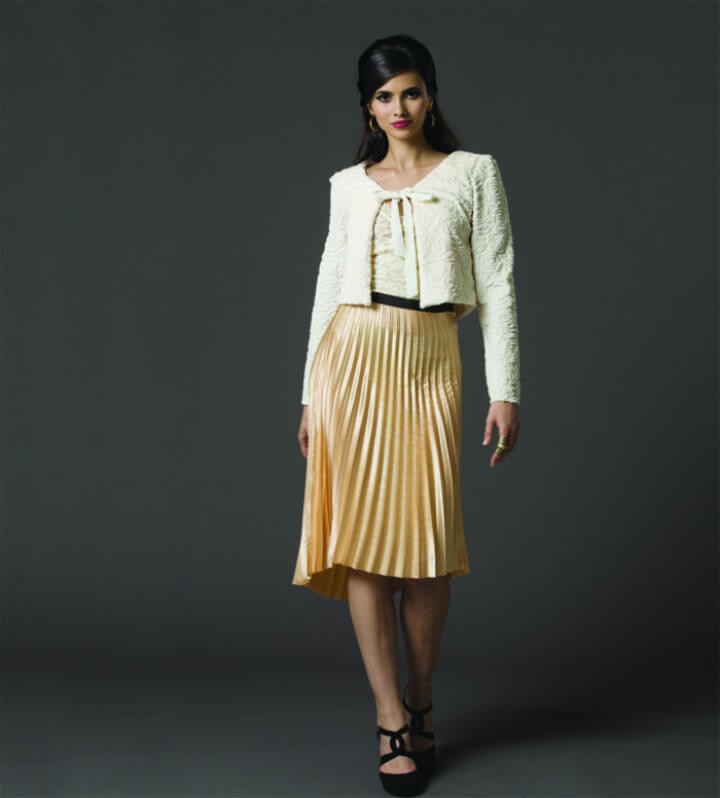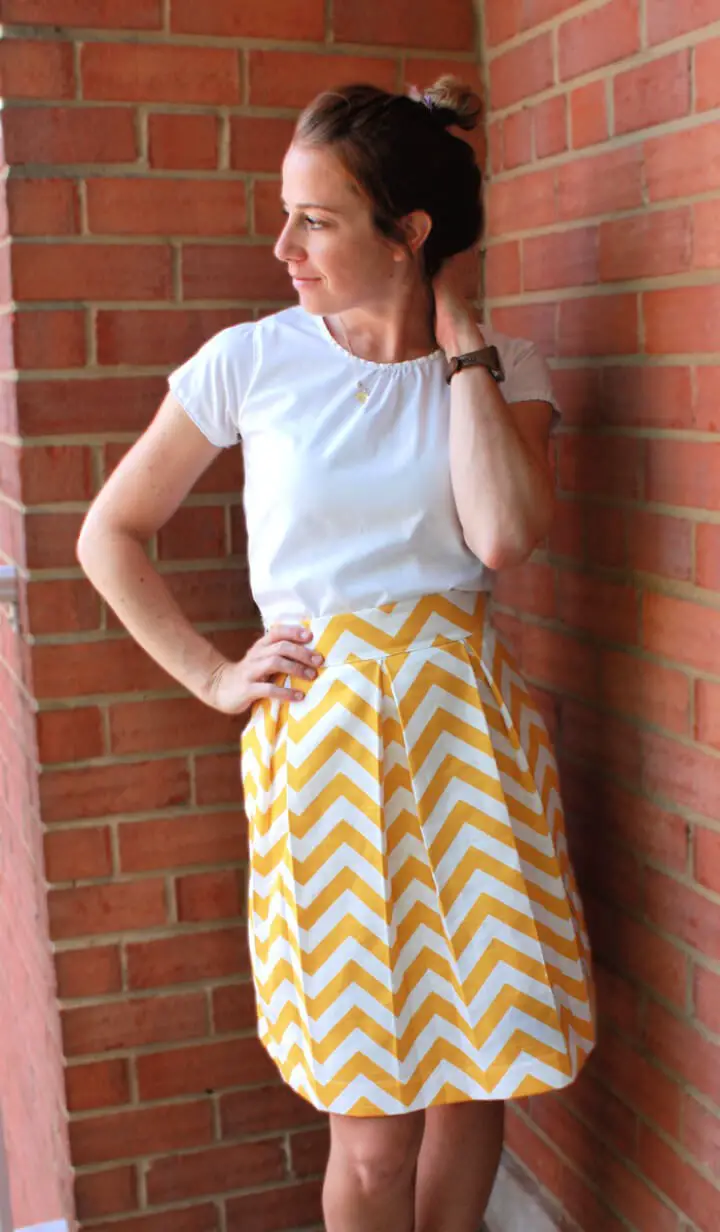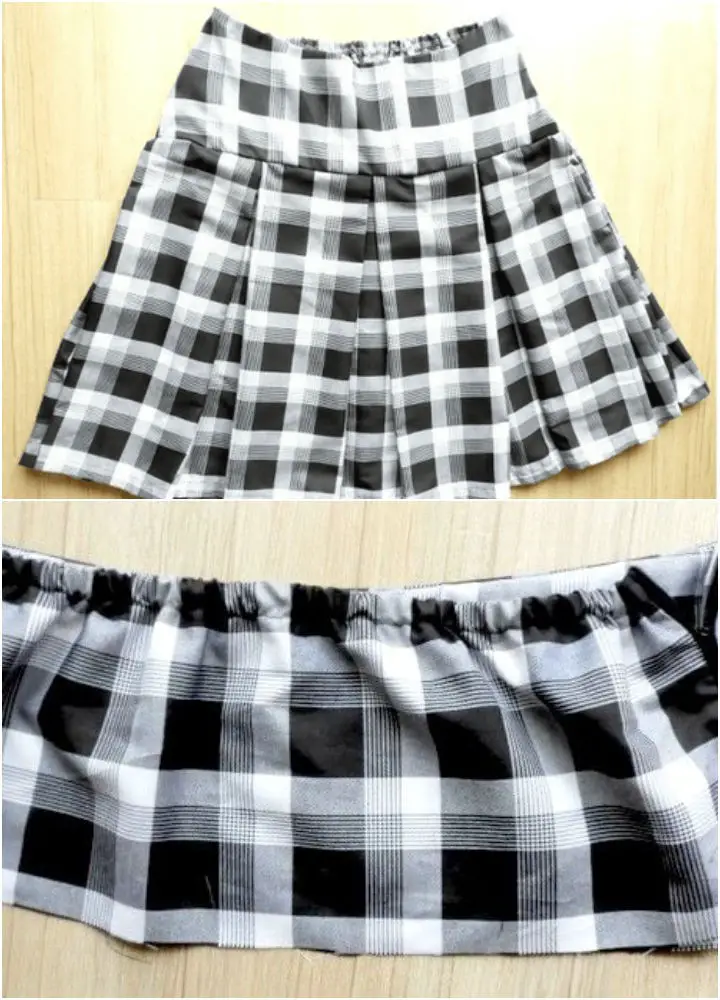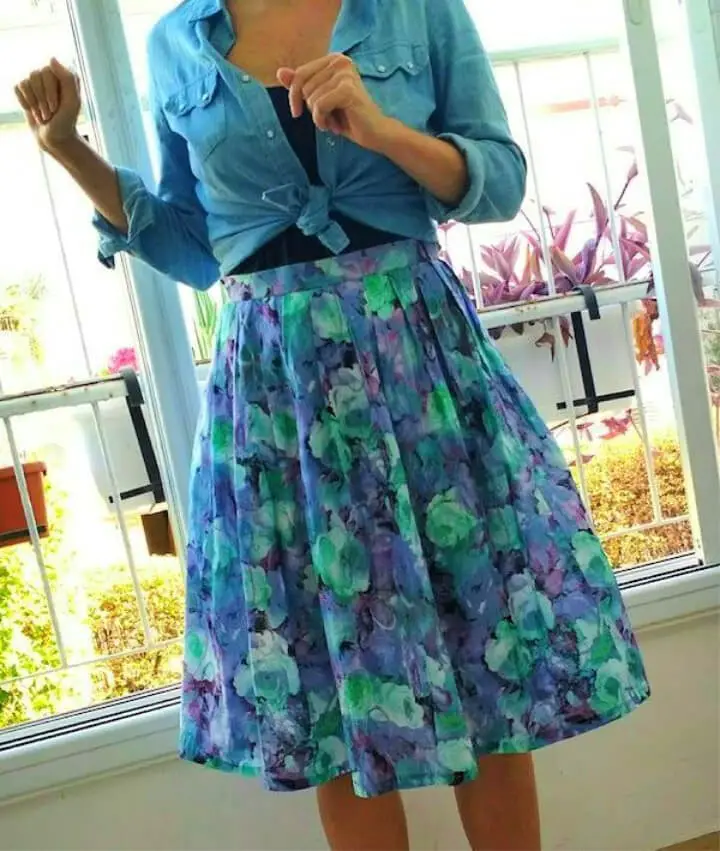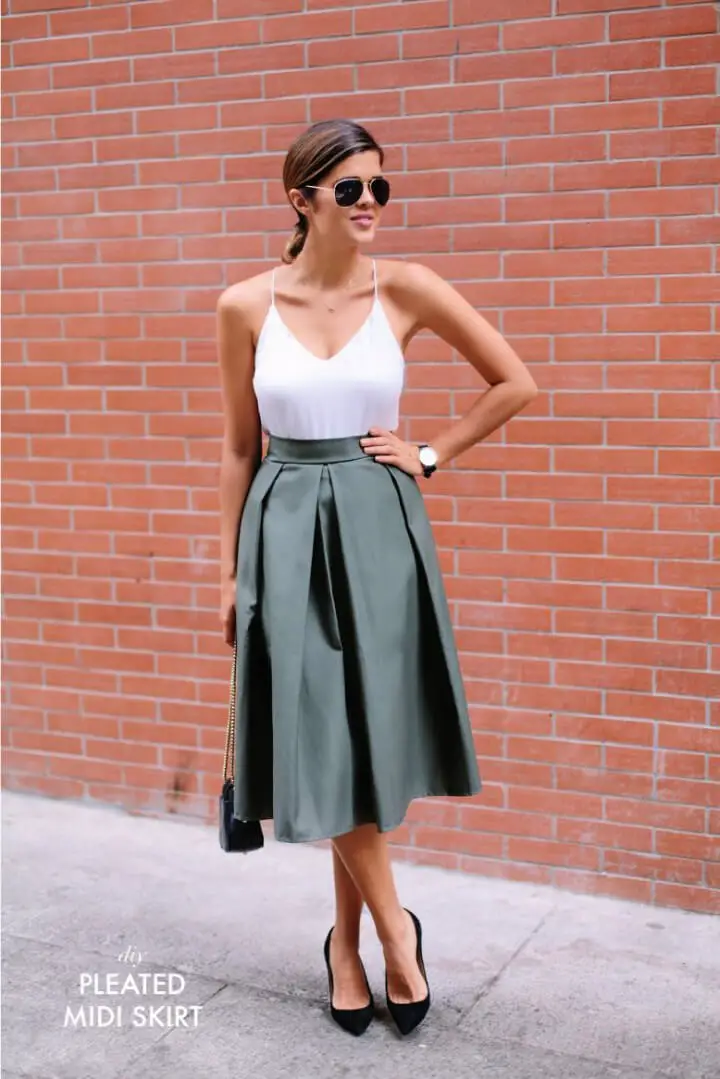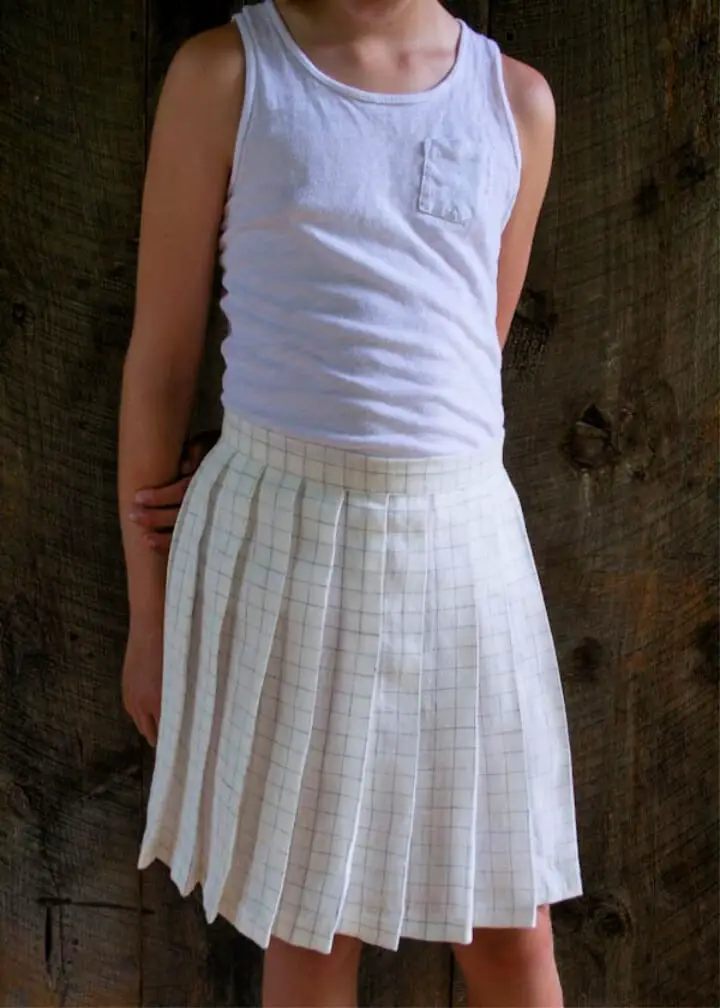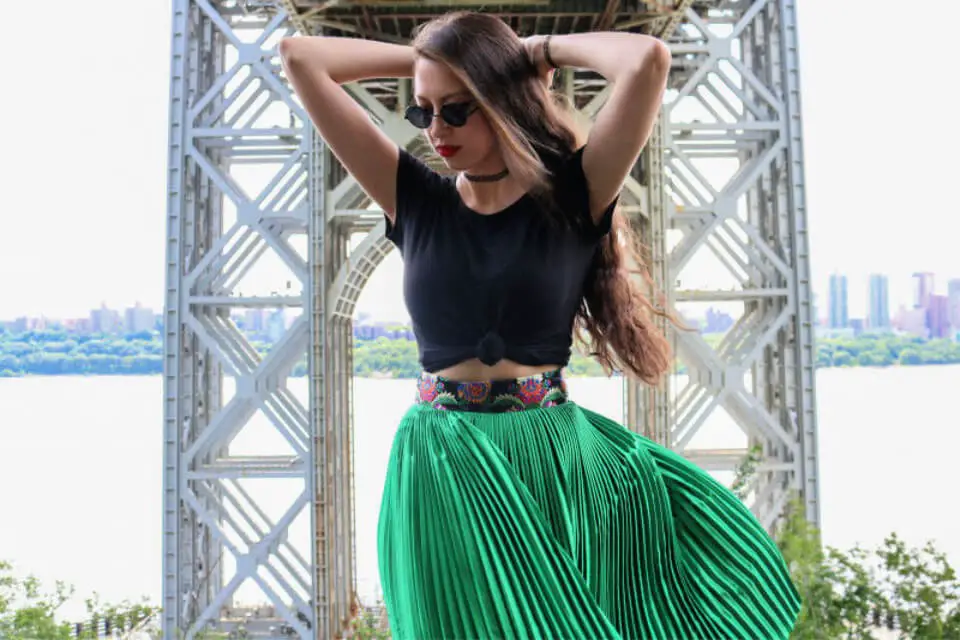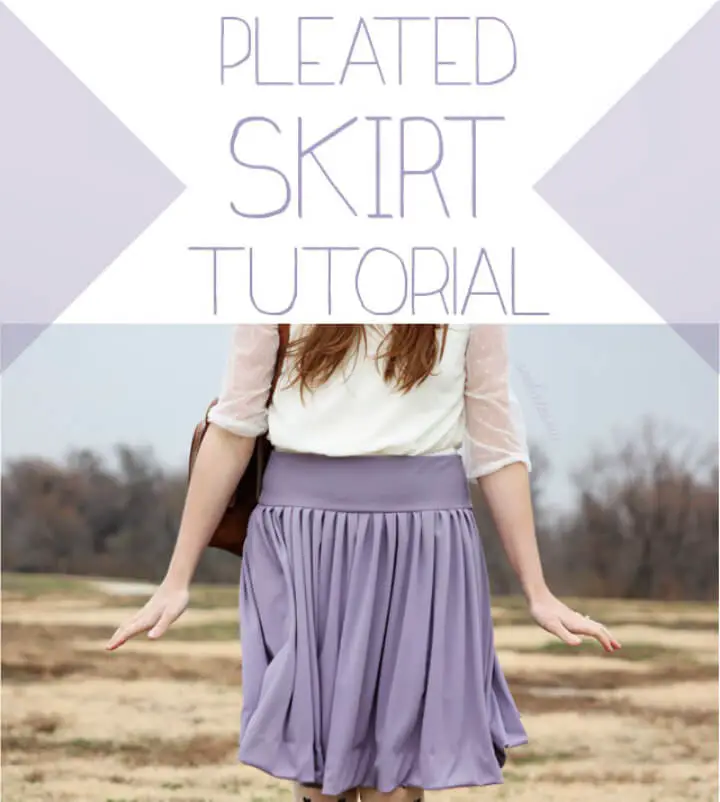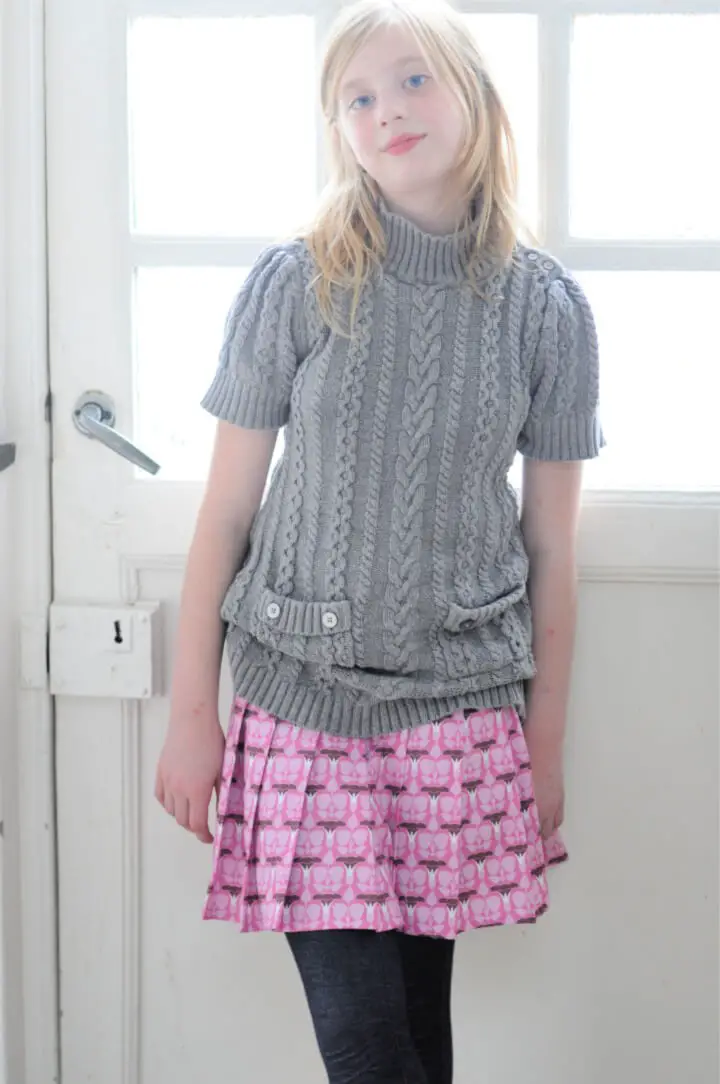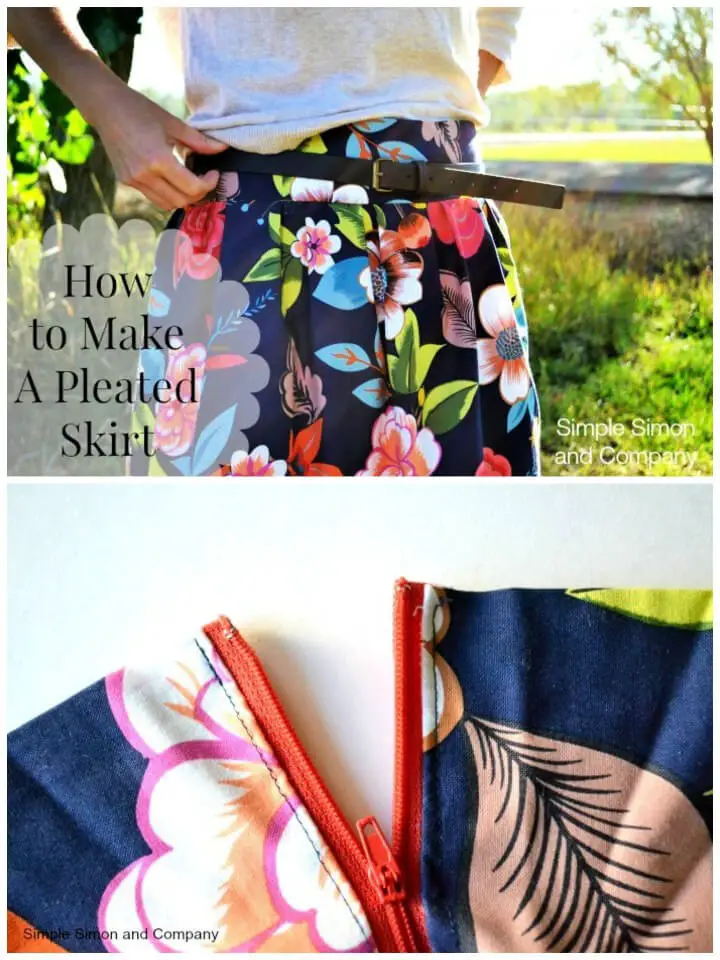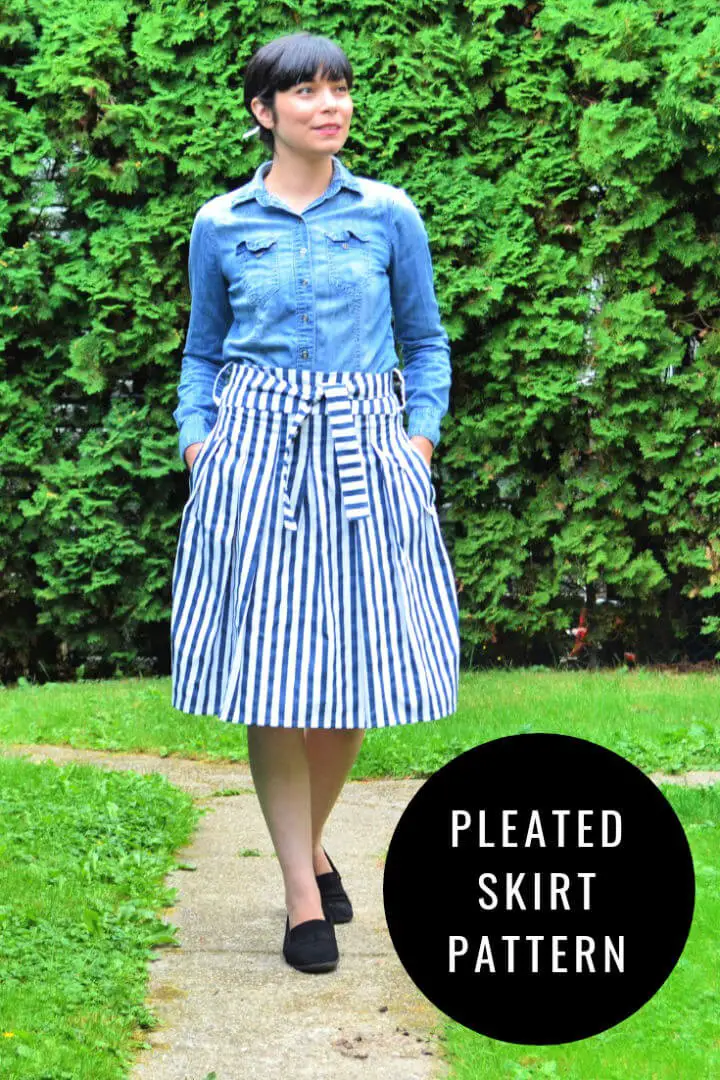22 Free Pleated Skirt Patterns to Sew
When it comes to crafting a pleated skirt, the key is to choose a light to medium weight fabric that provides the perfect balance of drape and structure. Cotton and linen are excellent options for this type of project, as they offer a natural texture and gentle stretch. To successfully bring a pleated skirt pattern to life, it’s essential to carefully consider measurements and cutting techniques. Essentially, a pleated skirt is simply a collection of rectangular pieces sewn together in harmony. The addition of Plisse fabric takes this design to the next level by incorporating pre-pleated texture that remains intact even after washing. To get started, gather your basic sewing supplies and a textured fabric of your choice. With these essentials at hand, you’ll be well on your way to elevating your wardrobe with some of the best pleated skirt patterns out there.
How to Sew a Pleated Skirt
Create your own stunning pleated skirt with its charming simplicity by crafting the bodice using patterns and combining it with poplin fabric, requiring approximately 2-3 yards of material. To complete the look, you’ll need a zipper, some thread, and a sewing machine to bring everything together.
Pretty Pleated Skirt Sewing Pattern
For those venturing into the world of sewing their own skirts or eager to master the best pleated skirt pattern, Sew Much Love Mary’s comprehensive guide is an invaluable resource. The step-by-step instructions begin with a thorough explanation of cutting from scratch, walking readers through every stage of the process from start to finish.
Free Pleated Fabric Skirt Sewing Pattern
As the holiday season draws near, you may be seeking inspiration for your wardrobe choices. Consider incorporating a stunning pleated skirt pattern into your look. To bring this vision to life, you’ll need 2 panels of Plisse Limonium silver pleated fabric, along with matching fabric for the waistband, lightweight fusible interfacing, an invisible zipper, and basic sewing supplies.
How to Sew Pleated Skirt
If the thought of sewing a pleated skirt sends shivers down your spine, you’re not alone. Many people assume it requires an inordinate amount of precision and complexity, but fear not! In reality, creating a pleated skirt is surprisingly straightforward. It’s simply a matter of cutting a few simple rectangles and sewing them together with ease. This particular design uses just 3 yards of fabric and features striking contrast at the hem and waistband – all thanks to some clever instructables.
Sewing a Pleated Skirt
For those who have fallen in love with the pleated skirts pattern but are intimidated by the intricate sewing required, there’s a simpler solution. Instead of creating the pleats from scratch, you can opt for pre-pleated panels and merely sew them together. By following the tutorial’s guidelines, you can create a stunning, runway-inspired pleated skirt that rivals the original designs. With this clever hack, sewing enthusiasts can still enjoy the look without the added complexity.
DIY Perfect Box Pleat Skirt
To embark on this project, you’ll need approximately 1-1.5 yards of fabric, one 9-12 inch invisible zipper, and a contrasting material for the pockets. While it’s considered an intermediate-level sewing endeavor, the end result is well worth the effort, featuring neatly sewn boxes that add a touch of elegance to the overall design.
Free Pleated Skirt Sewing Pattern
Regardless of your level of expertise in sewing, Sew Guide makes it possible for beginners to create a stunning minimalistic pleated skirt. To get started, you’ll need two fabric pieces: one for the lining of the front yoke and another for the back yoke piece. With these simple components, you’re ready to begin bringing your design to life.
Easy Pleated Skirt Pattern
Transform your wardrobe with this stunning A-line pleated skirt, boasting three elegant pleats in the front and three at the back. To create this masterpiece, you’ll need approximately 2 yards of soft cotton lining, 1/2 yard of feasible interfacing, a 10-inch long visible zipper, and matching thread. With these simple materials, you can achieve a sophisticated look with ease.
How to Sew Pleated Couture Skirt
To create a stunning pleated skirt, you’ll require a few essential materials and some basic sewing skills. The foundation of this tutorial lies in a simple yet effective knife pleating technique, which yields three layers per pleat. To get started, gather your supplies: a piece of fabric, one zip fastener, pins, tailor’s chalk, thread, and a trusty sewing machine.
How to Make a Pleated Midi Skirt
To create this elegant DIY pleated Midi skirt, you’ll need a few essential materials: cotton fabric, pins, a measuring tape, fabric scissors, a sewing machine, and thread. The process begins by marking points to form the pleats, then lining them up with the center point before crafting your first pleat. From there, simply repeat the process to create the desired number of pleats, which will ultimately give shape and texture to your skirt.
Pleated Midi Skirt Pattern In Any Size
This versatile pleated skirt pattern caters to all body types, thanks to the elastic-enhanced waistband that offers a comfortable fit. With only three main components – a waistband, front skirt piece, and back skirt piece – you can easily create this stylish garment. The waistband’s stretchy nature ensures a secure and adjustable fit for wearers of any size.
Making a Pleated Skirt in Linen Grid
Achieving the perfect pleat has never been easier! With Purl Soho’s guidance, you can add a touch of sophistication to your ensemble in no time. By following their simple yet elegant tutorial, you’ll learn how to create a stunning pleated skirt with just a few basic supplies and some easy-to-follow instructions. The result is a polished look that exudes refinement and poise.
Sewing a Pleated Satin Skirt in One Hour
Creating a stunning pleated skirt is surprisingly quick and easy. With just one hour of dedicated time, you can craft a beautiful garment that will turn heads. To get started, gather the following essential materials: three yards of vibrant Kelly green fabric, one yard of black satin-faced multi-colored floral jacquard, one yard of black-faced woven interfacing, nine-inch black invisible zipper, and a roll of black sticky draping tape. With these simple components, you’ll be well on your way to creating a show-stopping piece that’s sure to become a wardrobe staple.
Box Pleated Skirt Sewing Pattern
Unleash the wild side at your next party night with this striking zebra print pleated skirt! Its versatility shines when paired with a simple top and an elegant necklace. To create this showstopper, you’ll need 2 yards of heavy weight cotton, matching thread for stitching, a zipper for a secure closure, and a clasp to complete the look.
DIY Pleated Button Front Skirt
The tutorial showcases a stunning pleated skirt pattern, characterized by a buttoned band at the front. Crafted using 2 yards of 1-inch gingham fabric, each pleat measures 1 inch in width. The required materials include interfacing, 5 to 6 exterior buttons, one interior waistband button, and a single slide-style hook and eye fastener, making this project perfect for sewists looking to add some flair to their wardrobe with Sewdiy.
Pleated Wrap Skirt Free Pattern
Add a touch of whimsy to your style by incorporating this delightful pleated skirt into your wardrobe. With only 1.2 to 2 yards of woven fabric required, this charming piece is easily accessible for any skill level. Simply download the pleated skirt pattern and, with basic sewing skills and an invisible zipper, you’ll be well on your way to creating a unique and stylish addition to your fashion repertoire.
Not Your Grandma’s Pleated Skirt
To craft a flawless pleated skirt, begin by taking your waist measurement and then employ a simple mathematical formula to calculate the necessary fabric width. The process is straightforward: divide your waist measurement in half and add one inch. This will provide you with the ideal fabric requirement for your project. For a comprehensive understanding of this technique, refer to our tutorial, which outlines 10 step-by-step instructions that will guide you through the creation of your perfect pleated skirt.
Make Your Own High Waisted Pleated Skirt
The pleated skirt features an innovative design with pleats on both the front and back panels, secured by a side zipper. To bring this project to life, you’ll need a 1-yard piece of cotton fabric, along with essential notions including thread, a 7-inch zipper, ballpoint pens, fabric scissors, and a hand needle. With these basic materials at your disposal, you’re ready to get started on creating a unique and stylish garment that’s sure to turn heads.
Easy Peasy Pleated Skirt Pattern
Get ready to twirl with style! This elegant pleated skirt can be crafted using a tape measure, pencil, 2-inch wide elastic, iron, pins, safety pins, and other essential supplies. The process involves just four straightforward steps. For a step-by-step guide, check out the accompanying tutorial.
How to Sew Wide Waistband Pleated Skirt
To create the wide waistband pleated skirt, you’ll need two yards of fabric, along with some essential materials such as a 7-inch zipper, approximately 1/2 yard of Pellon, a sewing machine, thread, scissors or rotary cutter, pins, measuring tape, and a yard stick. Additionally, a cutting mat is also necessary for precise cutting. This combination of materials will enable you to craft the skirt with ease and accuracy.
The Pleated Skirt Free Sewing Pattern
To create the DIY pleated skirt, the tutorial recommends using lightweight fabrics such as cotton or linen for a flowy and elegant look. For this project, you’ll need a printed pattern, 2 meters of woven fabric, matching thread, a 4-inch zipper, light-weight interfacing material, pins, a measuring tape, and scissors. With these materials at hand, you’re ready to start crafting your unique pleated skirt.
DIY Pleated Skirt In Under 30 Mins
Discover the charm of plisse fabric with its unique ability to retain pleats even after washing. The plisse fabric pleated skirt pattern is now available! For precise measurements, refer to the accompanying tutorial. If you find the amount of fabric seems excessive, simply ease in the side seams slightly to achieve the desired fit.
Frequently Asked Questions:
What is a pleated skirt?
Pleated skirts boast a distinctive feature: evenly spaced, accordion-like folds that run along the entire length of the garment. This unique design comes in various forms, such as knife pleats, box pleats, inverted pleats, and sunray pleats. The versatility of these skirts lies not only in their fabric choices – which can include cotton, silk, wool, and synthetic materials – but also in their ability to be dressed up or down for a range of occasions, from formal events to everyday wear. When paired with diverse tops and accessories, pleated skirts offer endless styling possibilities.
How do you wear a pleated skirt?
Pleated skirts offer endless opportunities for creative expression. To begin, consider pairing the skirt with a tucked-in top such as a sleeveless blouse, tank top or t-shirt. For a more polished appearance, try combining it with a collared shirt and blazer. Elevate your look further by adding heels, statement jewelry or a belt. Alternatively, opt for a more relaxed vibe by teaming the skirt with a fitted sweater, t-shirt and sneakers. Complete the outfit with a cross-body bag or shoulder bag. It’s essential to maintain simplicity when styling pleated skirts to prevent an overwhelming appearance. With these guidelines in mind, you’re ready to unleash your personal style and rock that pleated skirt!
What are some styling tips for pleated skirts?
Pleated skirts offer a versatile and stylish addition to any outfit. To maximize their impact, combine them with a neatly tucked-in sweater or blouse for a refined appearance. For a more relaxed look, pair the skirt with a loose-fitting t-shirt and sneakers. Adding a belt or statement jewelry can also elevate your style and draw attention to the pleats. When it comes to the length of the skirt, consider the occasion – midi styles are well-suited for formal events, while mini-pleated skirts are ideal for casual, everyday wear.
Where can I find a pleated skirt?
Pleated skirts can be found in a variety of settings, both online and offline. Department stores such as Macy’s, Nordstrom, and Bloomingdale’s typically carry a range of pleated skirt styles and colors. Additionally, popular clothing retailers like ASOS, Forever 21, and Zara offer pleated options in their collections. For those seeking a specific type or style, an online search is likely to provide more options than shopping in-person. Many independent designers also create unique pleat designs, making specialty boutiques and websites worth exploring.
How do I care for a pleated skirt?
To preserve the intricate details and maintain the silhouette of a pleated skirt, it’s crucial to handle it with care during cleaning and storage. Always opt for hand-washing or dry-cleaning, as machine washing can compromise the delicate pleats. For minor stains, gently blot the area with a damp cloth and mild detergent. After washing, allow the skirt to air-dry completely, carefully avoiding any twisting or wringing motions that could damage the fabric. To release wrinkles, lightly iron the reverse side of the garment on a low heat setting. When storing the pleated skirt, suspend it from a hanger with the pleats facing downwards to prevent distortion over time. Steer clear of plastic bags and direct sunlight, as these can foster mildew or cause discoloration. Furthermore, keep your pleated skirt at a safe distance from harsh chemicals to safeguard its color and shape.
How should I pleat my skirt?
The choice of pleat type depends on the skirt’s style and the desired look. While knife pleats are often preferred for their slimming effect, box pleats can add volume to create a more dramatic silhouette. If you’re unsure which type would be best for your skirt, consider consulting a professional tailor who can provide guidance. To ensure a high-quality finish, it’s essential to use premium interfacing and matching thread when sewing the pleats. Additionally, handwashing is recommended for pleated skirts, as machine washing may cause them to lose their shape. A gentle soap and low-temperature ironing with a pressing cloth are crucial for preserving the pleats’ integrity. Avoid over-ironing, as this can damage the fabric and compromise the overall appearance.
What is the difference between a knife pleat and a box pleat?
A knife pleat and box pleat are two distinct folds used to create a structured appearance in various fabrics and materials. A knife pleat involves pressing the fabric together and top-stitching down both sides, resulting in a crisp, sharp fold that provides a more formal look or extra fullness. On the other hand, a box pleat consists of two overlapping folds moving in opposite directions, producing a softer, easier appearance. While both types of pleats are used in clothing, curtains, and upholstery, their distinct characteristics make them suitable for different purposes. Knife pleats are ideal for formal occasions or when seeking added volume, whereas box pleats are often preferred for a more casual look.
What is the difference between a pleated skirt and a gathered skirt?
A skirt’s design can take on two distinct forms: the pleated skirt and the gathered skirt. The former is characterized by a fabric panel with multiple, evenly-spaced folds that are pressed to create a crisp silhouette. This style is often used in both casual and formal wear, as it hangs straight down from the waistline. In contrast, gathered skirts feature extra fabric accumulated at the waistline to produce a fuller effect. This type of skirt can be either short or long and generally has a more relaxed appearance than its pleated counterpart. Both styles are versatile in terms of fabric choice, making them suitable for various looks. The primary distinction between these two constructions lies not just in their appearance but also in the process by which they are created. Pleats provide a structured look through careful folding and pressing, whereas gathers offer a more relaxed silhouette due to the gathered nature of the fabric.
How do I make a pleated skirt fuller?
To amplify the fullness of a pleated skirt, consider adding more pleats by sewing additional seams and pressing them into their intended shape. Alternatively, opt for stiffer or thicker fabrics that will naturally create more volume without requiring extra pleats. Another approach is to gather the fabric at the waistband, allowing you to control the level of fullness achieved. To ensure your pleats remain in place, be sure to press them thoroughly after completion. Finally, don’t forget to adjust the hemline as needed to achieve the desired overall length. By employing these techniques, you can successfully create a fuller and more alluring pleated skirt.
How do I make a pleated skirt less full?
To tone down the volume of a pleated skirt, consider scaling back the size of each pleat or eliminating some altogether. For a more subtle approach, use an iron to smooth out each pleat, which may also require a slight adjustment to the waistband for a secure fit. If you’re comfortable with sewing, you can manually adjust the pleats by stitching them down. Additionally, if your skirt features a belt, try cinching it tighter to create a more streamlined silhouette and further reduce the fullness of the pleats.
Conclusion:
If you’re eager to tackle a fun and creative sewing project, consider making a pleated skirt. These DIY skirts are versatile and can be tailored to flatter any body type. The best part is that there’s no shortage of ways to customize them, from fabric choice to length and style. With many free patterns available online, you can get started with ease. Simply grab your fabric and start sewing! Staying on top of the latest trends doesn’t have to break the bank or require a ton of time. By embracing DIY and having a passion for sewing, you can create your own unique pieces that reflect your personal style. For instance, if you’re looking for a longer pleated skirt, why not make one from home instead of searching high and low? With a little creativity and some basic sewing skills, the possibilities are endless. So, pick up those needles and threads and get ready to create something amazing!
